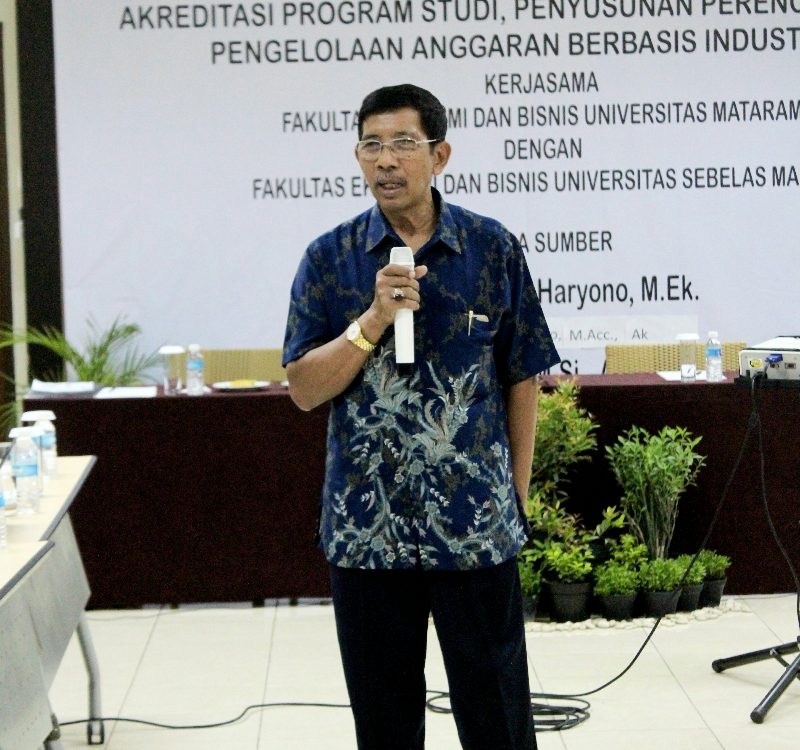
Study Program Needs to Work Hard Preparing the BAN-PT Accreditation with 9 Criteria
The National Accreditation Board for Higher Study (BAN-PT) recently updated the requirements for the Accreditation Instrument for Study Program (IAPS) 4.0. The current standard focused more on the output and outcome of the teaching and learning activities. The quality assessment is more focused on the process, output, and outcome, while the previous instrument focused more on input. This will make a Study Program do harder work in order to prepare the accreditation using Criteria 9. The Criteria 9 covers: vision, mission, goals, and objective; human resource; finance and infrastructure; education; research; community service; output and the achievement of the Tri Dharma of Higher Education.
This was mentioned by Prof. Tulus Haryono, M.Ek., during a technical meeting with the Universitas Mataram (UNRAM) on Friday, December 27, 2019. The meeting was attended by approximately 20 staff of the Faculty of Economics and Business, Universitas Mataram (FEB UNRAM) who hold leadership role.
Further, Prof. Tulus explained that there are two reports that should be submitted to the BAN-PT namely the Study Program Performance Report, which covers quantitative data, and Self Evaluation Report for Study Program that mainly covers qualitative information. The submission to the BAN-PT should be made at least 6 (six) months before the previous accreditation certificate is expired. Therefore, the preparation of the reports should take one year prior to the submission to BAN-PT, the Study Programs should get prepared because the preparation of the Accreditation Reports needs a high accuracy.
“The Reports is prepared by the Head of Study Program assisted by an accreditation team. The Head of Study Program should be directly involved in the preparation of the Report and should completely understand its content, because they will get interviewed during the assessment, while the team member will provide assistance where needed,” Prof. Tulus explained. Further he also mentions that the Report should strictly follow the format provided by the BAN-PT. “No matter what the template is, we have to follow the format provided by the BAN-PT,” said the Professor who had served as BAN-PT assessor for more than 16 years.
In term of collaboration report, the Study Programs need to report their collaboration with the industries, institutions, or other universities both with national and international universities. However, the collaborations that can be included in the report are not the ‘dormant’ collaboration, which mean only active collaboration can be included. For lecturer profile, the assessor will assess whether the lecturers are capable and possess the competency to teach on certain course, this apply for both permanent and non-permanent lecturer. The assessor will also consider the lecturer last education.
“If all lecturers are assigned to course that are in line with their competency and skill, the program will earn 4 points. Based on the regulation from the BAN-PT if there are more than 7 lecturers who are assigned to a course that is not in line with their competency, then the program will be given 3 points,” he said.
For the sake of accreditation process, Prof. Tulus reminds that a program should focus on hiring permanent lecturers and limit the number of non-permanent lecturer. In his presentation, Prof. Tulus explains all the important point related with accreditation using 9 criteria and followed with discussion with the participants.

